Doctors only prescribe Tamiflu when a child has flu symptoms and tests positive for influenza A or influenza B.
Medical news on February 19: Things to note when using Tamiflu flu treatment in children
Doctors only prescribe Tamiflu when a child has flu symptoms and tests positive for influenza A or influenza B.
Tamiflu is usually used within 48 hours of symptoms appearing. Therefore, parents should not use Tamiflu without a doctor's prescription.
Things to note when using Tamiflu flu treatment
Master, Doctor Tran Thu Nguyet, Vietnam Institute of Applied Medicine said, Tamiflu is an antiviral drug prescribed to treat seasonal flu, and can be used for children.
Although Tamiflu does not completely relieve flu symptoms, it can reduce the severity of the illness, shorten the duration of the flu, and limit the risk of complications from the flu.
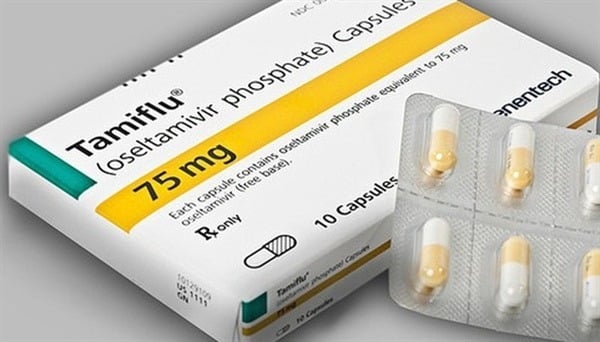 |
Tamiflu is usually used within 48 hours of symptoms appearing. Therefore, parents should not use Tamiflu without a doctor's prescription. |
Tamiflu has been approved for use since 1999 in children 2 weeks of age and older. Side effects are generally mild, so it is considered safe to use. Tamiflu works by preventing the flu virus from multiplying in the body. Although Tamiflu is not an antibiotic, it still requires a prescription.
According to Dr. Nguyet, doctors only prescribe Tamiflu when children have flu symptoms and test positive for influenza A or influenza B, and it must be used within 48 hours of symptoms appearing. Children can use Tamiflu if they have symptoms such as fever, chills, cough, runny nose, sore throat, body aches or fatigue.
If your child has severe flu symptoms or is at high risk for flu complications, your doctor may prescribe Tamiflu, albeit at a later stage. Risk factors include children under 5 years of age, especially children under 2 years of age, and those with chronic medical conditions such as asthma, diabetes, or heart or lung disease.
Studies have shown that Tamiflu can prevent serious complications of the flu, such as respiratory failure or death. Tamiflu also reduces the risk of pneumonia and other health problems that lead to hospitalization. It can reduce the length of your child’s illness by 1 to 3 days, allowing them to return to their normal activities, such as school and play, sooner.
When used early, Tamiflu can also prevent middle ear infections, a common complication of the flu. In particular, Tamiflu can reduce the need for antibiotics to treat complications caused by other bacterial infections in children aged 1 to 12 years.
The U.S. Food and Drug Administration (FDA) emphasizes that Tamiflu is most effective when used within 48 hours of flu symptoms appearing. So if parents confuse the common cold with the flu, they may miss the ideal treatment time. If you suspect your child has the flu, take them to the doctor for timely diagnosis and treatment.
Tamiflu may not be effective against certain strains of influenza, such as the H1N1 strain (2009). Therefore, parents should not give their children Tamiflu without a doctor's prescription.
The main side effects of Tamiflu include nausea and vomiting. Rarely, serious side effects such as hallucinations, confusion, seizures or neurological problems can occur. If your child shows signs of unusual behavior, you should contact your doctor immediately.
Tamiflu is also effective in preventing flu when given before symptoms appear, but is only prescribed for children at risk of severe flu. However, Dr. Nguyet recommends that the best way to prevent flu in children 6 months and older is to get a seasonal flu shot every year.
Do not be subjective with whooping cough in children
Bu Dang District Medical Center, Binh Phuoc Province has confirmed the death of a 7-month-old child, Th.AV, in Dac Nhau Commune, Bu Dang District, due to whooping cough.
This is the 6th case of whooping cough in Bu Dang district, of which 2 have died and 4 have recovered. The most recent death was baby Ph.Th.Th.Nh., 2 months old, in Son Phu village, Phu Son commune, Bu Dang district, who died on December 27, 2024, after more than a week of treatment for whooping cough.
According to a report from the Bu Dang District Medical Center, baby Th.AV was in good health and developed normally after birth. However, on January 5, 2025, the baby began to have symptoms of prolonged coughing, each coughing spell lasting from 1 to 2 minutes, accompanied by a slight fever.
Despite this, the baby continued to feed well and was alert. After two days, the symptoms did not improve, and the mother took the baby to a private clinic, where he was diagnosed with bronchitis and treated with medication for four days.
However, after a period of treatment, the baby's condition did not improve but became more and more severe. The baby was tired, drank less milk, and the cough lasted longer.
On January 11, the baby was taken to Bu Dang District Medical Center and diagnosed with severe pneumonia. He was then transferred to Binh Phuoc General Hospital with a diagnosis of severe pneumonia, and his condition did not improve. He could not breastfeed and could only breathe oxygen.
At 6:30 p.m. on January 11, the baby was transferred to Children's Hospital 2. Here, the baby was treated in the intensive care unit with diagnoses of severe pneumonia, acute respiratory distress syndrome, whooping cough, and ventricular dilatation.
Despite intensive treatment, the baby's condition did not improve. On February 5, the baby was returned home, but died shortly thereafter.
Through epidemiological investigation, Bu Dang District Medical Center determined that baby Th.AV only stayed at home after birth and did not have contact with anyone outside the family.
Bu Dang District Health Center has monitored surrounding households but has not detected any new cases of whooping cough or fever. The center has also promoted and encouraged families to vaccinate their children.
The Bu Dang district government has directed departments and organizations to strengthen the prevention of infectious diseases, including whooping cough. Disease prevention and control activities have been widely carried out through the mass media. Medical facilities have also vaccinated children and reviewed subjects in need of expanded vaccination.
The leader of Bu Dang District People's Committee also emphasized the implementation of disease prevention and hygiene measures ateducational institutions, ensuring a clean, airy, well-lit environment and maintaining personal hygiene to reduce the risk of disease transmission.
Serious illness from pets
Patient NL, female, 65 years old, from Quang Ninh, with a history of hypertension, was admitted to the hospital with persistent epigastric pain, frequent bowel movements, loose and watery stools, combined with skin itching lasting more than a month. Before admission, the patient had been treated at a hospital near her home and had temporary improvement, but the disease relapsed later.
Through the history of contact, the patient's family said that they raised a large dog (weighing about 25kg) with a history of vomiting tapeworms. However, the family did not pay attention and still had direct contact with the dog without using protective measures such as gloves or shoes when cleaning the feces. This could be the main cause of parasitic infection in patient NL.
At the Central Hospital for Tropical Diseases, the patient presented with characteristic skin lesions, including itchy rashes and circular marks on the hands and torso, accompanied by signs of worms moving under the skin.
This is one of the typical clinical signs of helminth infection, especially Toxocara spp. After conducting tests, the results showed that the patient was positive for Fasciola hepatica and Toxocara spp.
Test results showed a strong reaction of the patient's body to the parasite, with the IgE index soaring to 1,652 IU/mL (more than 16 times higher than the normal level of less than 100 IU/mL).
At the same time, the patient's eosinophil count also increased by 12.7% (compared to the normal level of 2-8%), indicating that the body was facing a serious inflammatory condition caused by worms.
According to experts, Toxocara spp. is a parasite that lives in the small intestine of dogs and cats, especially in puppies under 3 to 6 months old. Each day, the worm lays about 200,000 eggs, which are excreted in the dog's feces and can survive in the environment for months.
Roundworms in dogs and cats can cause symptoms such as abdominal pain, diarrhea, vomiting, difficulty breathing, itching, skin irritation, and weight loss. Regular deworming of dogs and cats helps prevent the spread of parasites, including roundworms and liver flukes.
Clean the living environment of dogs and cats: Make sure the pet's living area is always clean to avoid worms developing in their living environment.
Use gloves and shoes when handling pets: Especially when cleaning up feces, protective measures should be used to limit direct contact with parasites.
Clean clothes and tools after contact with pets: Wash clothes, disinfect tools, and clean areas at risk of worm infection after contact with pets.
Clean floors and hands: Use disinfectant solution to clean floors regularly, and wash hands thoroughly before eating.
Dr. Tran Thi Hai Ninh, Head of the Department of Internal Medicine, Central Hospital for Tropical Diseases, emphasized that fully implementing preventive measures not only protects individual health but is also an effective way to protect public health, preventing roundworm disease in cats and dogs and related parasitic diseases.
Keeping pets brings many benefits, but if hygiene and prevention measures are not followed, the risk of parasitic infections is very high. Therefore, everyone needs to take the initiative to take care of their health, their family and their pets, to ensure a healthy and safe living environment for everyone.
Source: https://baodautu.vn/tin-moi-y-te-ngay-192-nhung-dieu-can-luu-y-khi-su-dung-thuoc-dieu-tri-cum-tamiflu-o-tre-em-d247781.html














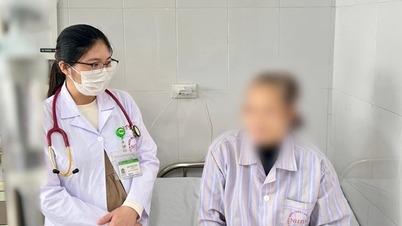



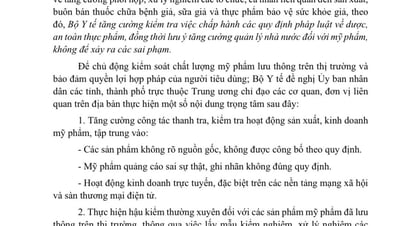






![[Video] Research on adjusting regulations on authority to set prices for medical examination and treatment](https://vphoto.vietnam.vn/thumb/402x226/vietnam/resource/IMAGE/2025/5/17/c1a2022965ad4702a0c0500e6b37b3b7)











![[Photo] Prime Minister Pham Minh Chinh and Prime Minister of the Kingdom of Thailand Paetongtarn Shinawatra attend the Vietnam-Thailand Business Forum 2025](https://vphoto.vietnam.vn/thumb/1200x675/vietnam/resource/IMAGE/2025/5/16/1cdfce54d25c48a68ae6fb9204f2171a)















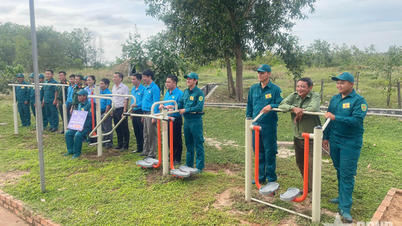






























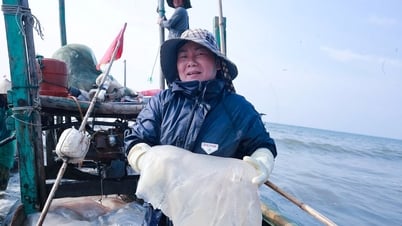




















Comment (0)